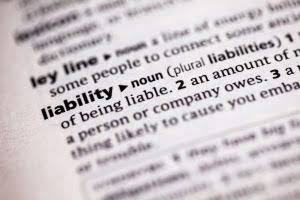
This involves accelerated depreciation and uses the Book Value at the beginning of each period, multiplied by a fixed Depreciation Rate. You can easily compute for this value using this double declining depreciation calculator, or you can compute it manually. The double declining balance method accelerates depreciation, resulting in higher expenses in the early years, while the straight line method spreads the expense evenly over the asset’s useful life.

Double-declining balance depreciation method: Definition, benefits, and accounting basics

For the first period, the book value equals cost and for subsequent periods, it equals the difference between cost and accumulated depreciation. Adjusting an asset’s book value each period ensures financial records reflect petty cash current valuations. This involves recalibrating the book value based on depreciation, market changes, or impairments.
What is the double declining balance method of depreciation?
The Units of Output Method links depreciation to the actual usage of the asset. It is particularly suitable for assets whose usage varies significantly from year to year. This approach ensures that depreciation expense is directly tied to an asset’s production or usage levels. The Double Declining Balance Method, often referred to as the DDB method, is a commonly used accounting technique to calculate the depreciation of an double declining balance method asset.
Comparison with Other Depreciation Methods
- Per guidance from management, the PP&E will have a useful life of 5 years and a salvage value of $4 million.
- Further, this approach results in the skewing of profitability results into future periods, which makes it more difficult to ascertain the true operational profitability of asset-intensive businesses.
- Here’s the depreciation schedule for calculating the double-declining depreciation expense and the asset’s net book value for each accounting period.
- He currently researches and teaches economic sociology and the social studies of finance at the Hebrew University in Jerusalem.
- 1- You can’t use double declining depreciation the full length of an asset’s useful life.
This adjustment is relevant for businesses that frequently acquire new assets or dispose of old ones throughout the year. Partial-year adjustments aim to match depreciation expenses more precisely with the periods during which the asset was in use, offering a more accurate depiction of financial performance. In contrast, the units of production method ties depreciation expenses directly to the asset’s usage. This approach is useful when the asset’s wear and tear correlate directly with its activity level. For example, a manufacturing machine that depreciates based on the number of units it produces will have expenses that reflect its operational workload.

Consolidation & Reporting
When computing depreciation, the written-down value technique, or WDV method, is a handy tool to deal the depreciation. The Diminishing Balance Method or Declining Balance Method are other names for this method. There are two approaches that are typically used to calculate depreciation. Any asset when subjected to normal use will get subjected to new technology, wear and https://www.bookstime.com/articles/cost-control tear, or unfavorable market conditions, and will result in a reduction to its value.
- IFRS allows companies to adjust these assets to fair value, with any increase recorded in other comprehensive income.
- These eight depreciation methods are discussed in two sections, each with an accompanying video.
- While the method is a valuable tool for reflecting the depreciation of certain assets accurately, it may not be suitable for all situations.
- If impairment is identified, the book value is adjusted to reflect the recoverable amount.
- Note, there is no depreciation expense in years 4 or 5 under the double declining balance method.
- Double declining balance depreciation is a method of depreciating large business assets quickly.
- Double-declining balance depreciation applies a fixed rate to an asset’s decreasing book value each year.
